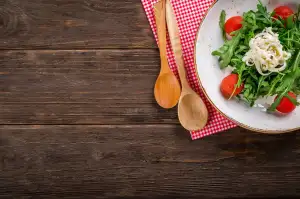Revive Your Cast Iron Skillet: Master the Art of Cleaning for a Spotless Home

Cleaning a cast iron skillet may seem like a daunting task, but with the right technique, it can be a breeze. A well-maintained cast iron skillet not only ensures delicious meals but also adds charm to your kitchen. Regular cleaning is essential to remove residue and prevent rusting. In this article, we will guide you through the steps of cleaning your cast iron skillet, from gathering the necessary supplies to storing it properly. So let's dive in and master the art of cleaning for a spotless home!
Gather the necessary supplies for cleaning
To effectively clean your cast iron skillet, it is important to gather the necessary supplies beforehand. Here's what you'll need:
1. Hot water: Make sure you have access to hot water as it will help in loosening any stuck-on food particles.
2. Soft sponge or brush: Opt for a non-abrasive sponge or brush that won't scratch the surface of your skillet.
3. Mild dish soap: Choose a gentle dish soap that is free from harsh chemicals and fragrances.
4. Salt or baking soda: These natural abrasives can be used to remove stubborn stains or residue.
5. Paper towels or clean cloth: These will come in handy for drying the skillet after cleaning.
By having these supplies ready, you'll be well-prepared to tackle the cleaning process and restore your cast iron skillet to its former glory.
Preparing the cast iron skillet for cleaning
Before diving into the cleaning process, it's important to prepare your cast iron skillet properly. Start by removing any leftover food particles or residue from the surface. Use a stiff brush or scraper to gently scrub away any stuck-on bits. Avoid using soap at this stage, as it can strip away the skillet's seasoning.
Next, rinse the skillet under warm water to remove any loose debris. Make sure to thoroughly rinse off all traces of food and scrubbing residue. Once rinsed, use a paper towel or clean cloth to dry the skillet completely.
After drying, inspect the skillet for any signs of rust or discoloration. If you notice any rust spots, gently scrub them with steel wool until they're gone. For stubborn rust, you can create a paste using equal parts baking soda and water and apply it to the affected areas. Let it sit for a few minutes before scrubbing again.
Once you've removed any rust, give the skillet one final rinse under warm water. Pat it dry with a clean towel and move on to the next step: cleaning the cast iron skillet itself.
Cleaning the cast iron skillet
Cleaning the cast iron skillet is an essential step to maintain its longevity and ensure optimal cooking results. Start by rinsing the skillet with hot water, using a brush or sponge to remove any food residue. Avoid using soap as it can strip away the skillet's seasoning. For stubborn stuck-on food, create a paste of coarse salt and water and scrub gently. Rinse thoroughly and dry immediately to prevent rusting. Never soak the skillet or leave it wet for long periods.
Drying and seasoning the cast iron skillet
Drying and seasoning the cast iron skillet is a crucial step in maintaining its longevity and preventing rust. After cleaning, it's important to thoroughly dry the skillet to remove any moisture. To do this, place the skillet on a stovetop burner over low heat for a few minutes. This will help evaporate any remaining water.
Once the skillet is dry, it's time to season it. Seasoning involves applying a thin layer of oil to the surface of the skillet to create a protective barrier against rust and enhance its non-stick properties. Start by applying a small amount of vegetable oil or flaxseed oil to a paper towel or cloth. Rub the oil all over the skillet, including the handle and exterior.
Next, place the skillet upside down in an oven preheated to 350°F (175°C). This allows any excess oil to drip off and prevents pooling. Let it bake for about an hour. The heat helps polymerize the oil, creating a smooth and durable coating on the skillet's surface.
After an hour, turn off the oven and let the skillet cool completely inside before removing it. Once cooled, your cast iron skillet is ready for use again! Remember that seasoning is an ongoing process, so repeat this process periodically to maintain its protective coating.
By properly drying and seasoning your cast iron skillet, you'll ensure its longevity and enjoy cooking with it for years to come.
Storing the cast iron skillet properly
Storing the cast iron skillet properly is essential to maintain its cleanliness and prevent rusting. After cleaning and drying the skillet, make sure it is completely cool before storing. Avoid stacking other cookware on top of it as this can cause scratches. To prevent moisture build-up, place a paper towel or cloth inside the skillet to absorb any excess moisture. Store the skillet in a dry place, away from any sources of humidity. If possible, store it with the lid slightly ajar to allow for air circulation. By following these storage tips, you can ensure that your cast iron skillet remains clean and ready for use whenever you need it.
In conclusion, mastering the art of cleaning your cast iron skillet is essential for maintaining its longevity and ensuring a spotless home. By following these steps, you can easily revive your skillet and keep it in pristine condition. Remember to always use the right supplies, such as a stiff brush or chainmail scrubber, and avoid using soap or harsh chemicals. After cleaning, make sure to dry the skillet thoroughly to prevent rusting, and then apply a thin layer of oil to season it. Lastly, store your skillet in a cool, dry place to avoid moisture buildup. With regular maintenance and proper care, your cast iron skillet will continue to serve you delicious meals for years to come!
Published: 22. 11. 2023
Category: Home



